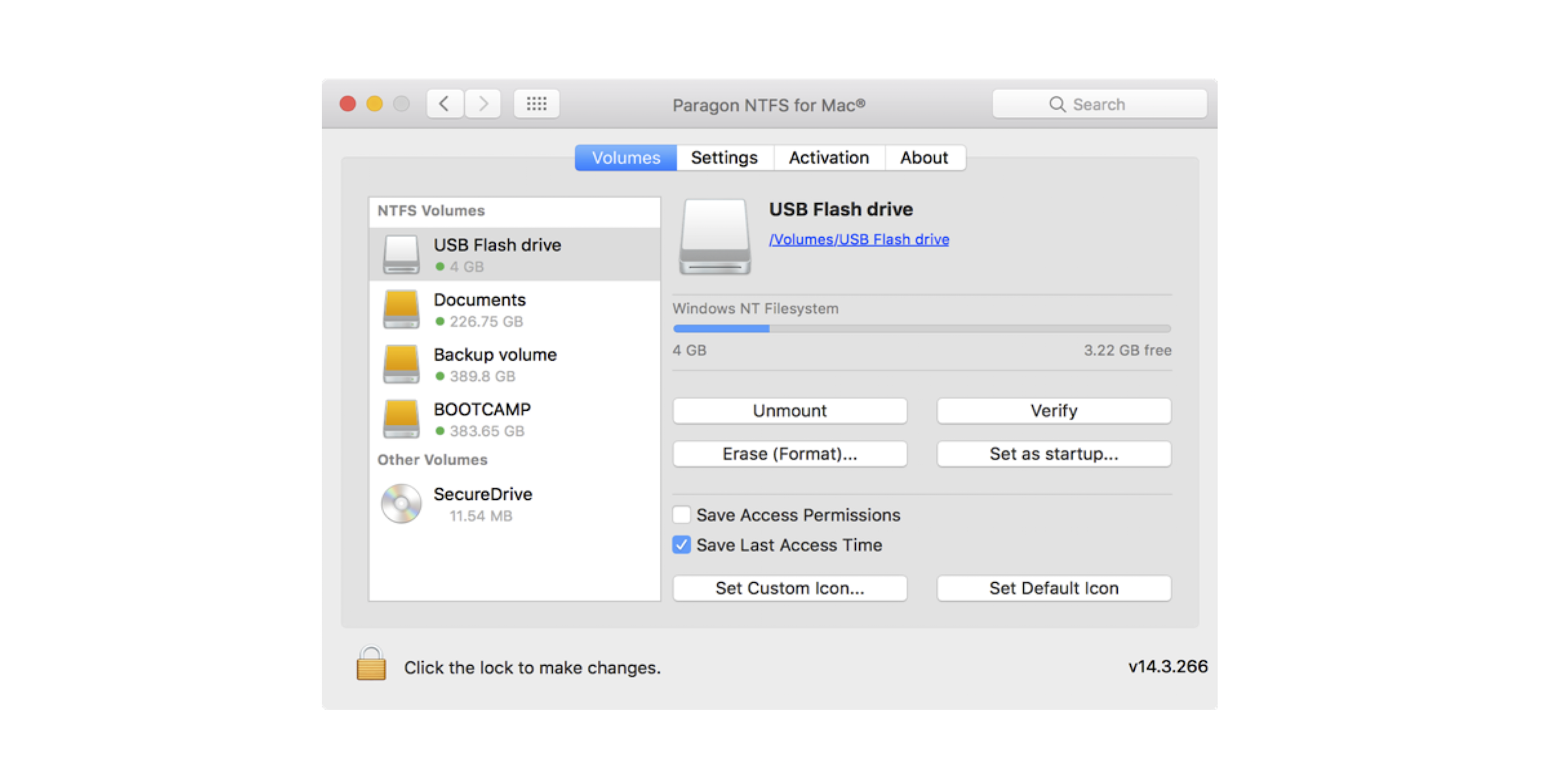

- #ENABLE READ WRITE NTFS MAC HOW TO#
- #ENABLE READ WRITE NTFS MAC FOR MAC#
- #ENABLE READ WRITE NTFS MAC INSTALL#
- #ENABLE READ WRITE NTFS MAC UPGRADE#
Using command line to enble writing to NTFS drives The reason is, nobody has the document or NTFS interface from Micro-Soft developers need to put a lot of effort into debugging and find a way to support this on macOS. So I would not suggest you try this one.Īnd there are a lot of 3rd party NTFS apps, but most of them are paid apps.
#ENABLE READ WRITE NTFS MAC FOR MAC#
Tuxera NTFS for Mac is the one that is even more expensive than Paragon the feature is very similar. And remember, only one NTFS app can be used on your Mac, so please try first. NTFS for Mac by Paragon Software is another excellent app for NTFS drive, but the price is very high I would not suggest you buy directly maybe have a trial first. Unlike all the other NTFS apps, it is free, and it also provides additional features you can even repair and format the disk in the app. It can mount/unmount NTFS drive, read/write/copy/paste/edit files in NTFS disk. Also, it has supported macOS since 10.13. It supports Apple Silicon M1, M1 Pro, M1 Max chip. Best Free Windows NTFS Disk Management App for macOS. Omi NTFS Disk Pro, Free, this is the reason you should try first.
#ENABLE READ WRITE NTFS MAC HOW TO#
How to write NTFS disk drive on macOS Monterey? Third-party NTFS drives And NTFS is not an open-source file format, so Apple also is tired to support this file system by guessing the interface after macOS 10.13, Apple did not support NTFS by default. NTFS has been used in windows by Micros Soft since 1993. But as usual, it does not support NTFS disk. There are a lot of new features in this new version. The new macOS 12.0.1 Monterey is released. How to enable NTFS write support on M1/M1 Max/M1 Pro Mac? How to eanble NTFS read/wite function on macOS Big Sur or Monterey? How to fix NTFS external drive read-only on macOS Monterey?
#ENABLE READ WRITE NTFS MAC UPGRADE#
If you upgrade to Monterey, and you might have similar question like below: Third-party applications are also available to provide NTFS support for OS X, which may be better options for enterprise environments where the experimental feature is not considered reliable enough to deploy.How to enable the NTFS write on Mac Monterey? There are several easier but older tools to run the above processes automatically, but the aforementioned NTFS Mounter utility seems to have stopped working after Snow Leopard, and therefore newer versions of OS X from Mountain Lion to Mavericks want to run from the command line. Sudo ln -s / Volumes / DRIVENAME ~ / Desktop / DRIVENAME & open ~ / Desktop / DRIVENAME As already mentioned, it may be useful to create a symbolic link to the OS X desktop to easily access the installed NTFS drive: Once again, you may want to search for / Volumes / to find a newly installed Windows NTFS drive with full read and write support.
#ENABLE READ WRITE NTFS MAC INSTALL#
If the drive has an equally complex name, use the UUID method above or rename the NTFS drive in Windows before attempting to install it with write support. Sudo echo “LABEL = WINDOWS8 nothing ntfs rw, auto, nobrowse” > / etc / fstab This script appends the drive name to the end of the / etc / fstab file, because / etc / is the system directory that you must have administrator privileges to write to the files in that directory, which is the required sudo prefix.įor example, adding read / write support to an NTFS drive named “WINDOWS8” would look like this:

Sudo echo “LABEL = DRIVE_NAME nothing ntfs rw, auto, nobrowse” > / etc / fstabīecause this uses the sudo command, you must enter the administrator password for the entire command to run correctly. Enable NTFS write support as Driveįor accuracy, I prefer to use the UUID method, but you can also add NTFS write support by the Windows drive name using the following command: You can also use an experimental NTFS write installation with the drive name instead of the UUID that we will go through next.

Sudo ln -s / Volumes / DRIVENAME ~ / Desktop / DRIVENAME To see a drive on your desktop (assuming your desktop is visible, of course), you can create an Finder alias with a symbolic link:

The NTFS drive may not appear on the desktop by default, but you can access it in the / Volumes / directory by opening that folder in the Finder with the following command:


 0 kommentar(er)
0 kommentar(er)
